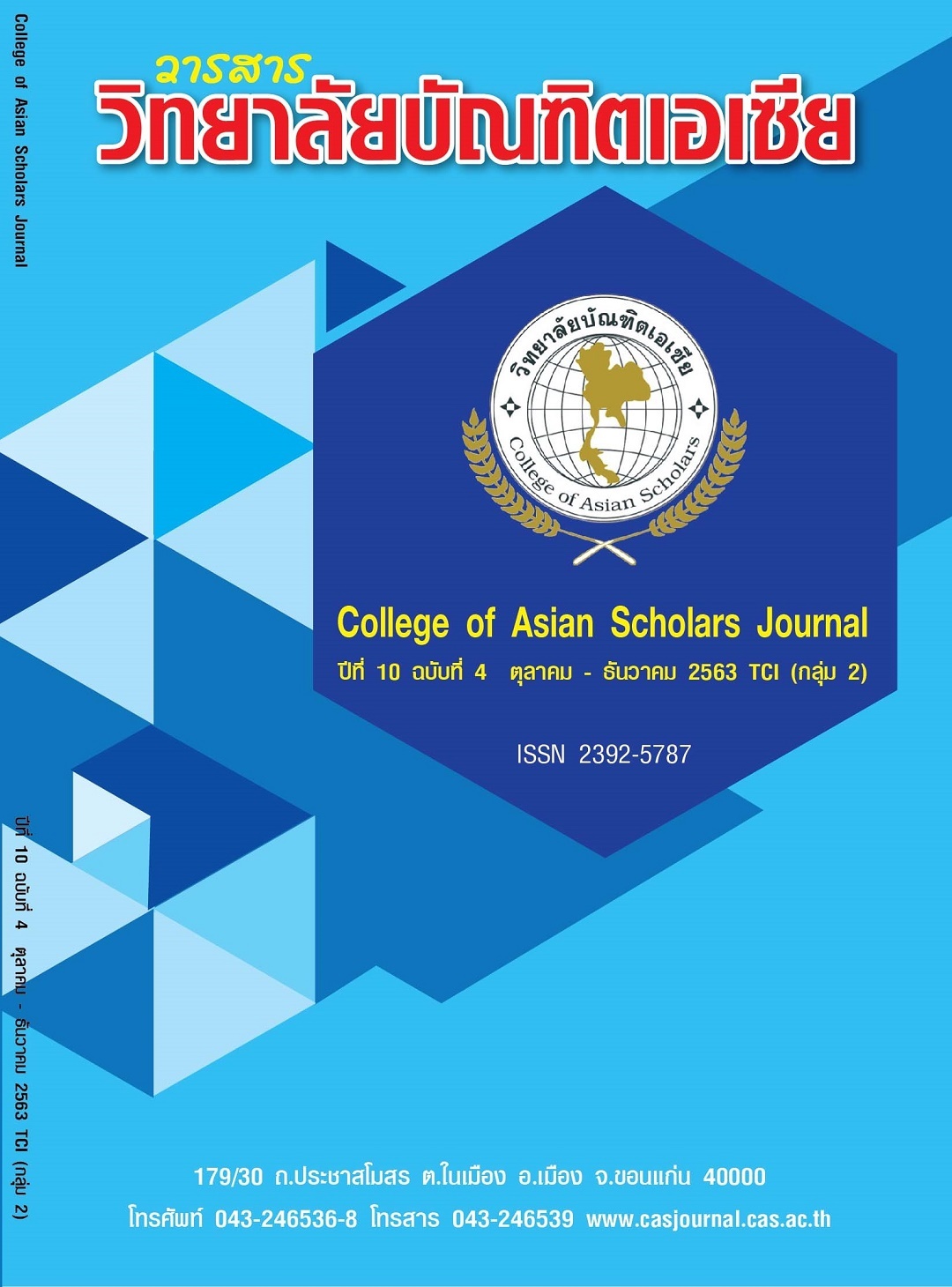ไฟล์ ดาวน์โหลด
|
หน้าที่ 37
|

ณิชาภัทร ฤทธิ์ละครCAS1015
|
ชื่อผู้วิจัย ณิชาภัทร ฤทธิ์ละคร
ชื่อผู้ส่งวารสารร่วม/ที่ปรึกษา สถานะ
ผู้วิจัยร่วม |
ชิดชไม วิสุตกุล |
วารสารฉบับเต็ม

|
สาขา |
สาขาการศึกษา
|
| ชื่อบทความ (ภาษาไทย) |
การพัฒนาความสามารถในการอ่านภาษาอังกฤษเพื่อความเข้าใจโดยใช้การสอนตามแนวคิดการเรียนรู้ แบบบูรณาการเนื้อหาและภาษา (CLIL) สำหรับนักเรียนชั้นมัธยมศึกษาปีที่ 3 |
| ชื่อบทความ (ภาษาอังกฤษ) |
|
|
| บทคัดย่อ ภาษาไทย |
การวิจัยครั้งนี้มีวัตถุประสงค์ เพื่อ 1) เปรียบเทียบความสามารถในการอ่านภาษาอังกฤษเพื่อความเข้าใจของนักเรียนชั้นมัธยมศึกษาปีที่ 3 ก่อนและหลังการเรียนรู้โดยใช้วิธีการสอนตามแนวคิดบูรณาการเนื้อหาและภาษา (CLIL) และ 2) ศึกษาความพึงพอใจของนักเรียนชั้นมัธยมศึกษาปีที่ 3 ที่มีต่อการเรียนรู้โดยวิธีการสอนตามแนวคิดบูรณาการเนื้อหาและภาษา (CLIL) รูปแบบของการวิจัยเป็นแบบกึ่งทดลอง (Quasi Experimental Research) ประชากรที่ใช้ในการวิจัย เป็นนักเรียนชั้นมัธยมศึกษาปีที่ 3 ที่กำลังศึกษาอยู่ในภาคเรียนที่ 1 ปีการศึกษา 2563 จำนวน 21 คน เครื่องมือที่ใช้ในการวิจัยประกอบด้วย 1) แผนการจัดการเรียนรู้กลุ่มสาระการเรียนรู้ภาษาต่างประเทศ วิชาภาษาอังกฤษ จำนวน 4 แผน 2) แบบทดสอบวัดความสามารถในการอ่านภาษาอังกฤษเพื่อความเข้าใจ มีลักษณะเป็นแบบปรนัยชนิดเลือกตอบ 4 ตัวเลือก จำนวน 30 ข้อ และ 3)แบบสอบถามความพึงพอใจของผู้เรียนที่มีต่อการเรียนรู้โดยใช้การสอนตามแนวคิดการบูรณาการเนื้อหาและภาษา (CLIL) สถิติที่ใช้ ในการวิเคราะห์ข้อมูลได้แก่ ค่าเฉลี่ย ค่าส่วนเบี่ยงเบนมาตรฐาน และค่าสถิติ t–test (dependent samples) คำนวณโดยใช้โปรแกรมสำเร็จรูปทางสถิติในการประมวลผล
ผลการวิจัยพบว่า 1) นักเรียนมีความสามารถในการอ่านภาษาอังกฤษเพื่อความเข้าใจ หลังเรียนสูงกว่าก่อนเรียนอย่างมีนัยสำคัญทางสถิติที่ระดับ .01 และ 2) นักเรียนมีความพึงพอใจต่อการเรียนรู้โดยวิธีการสอนตามแนวคิดบูรณาการเนื้อหาและภาษา (CLIL) อยู่ในระดับมากที่สุด มีค่าเฉลี่ยเท่ากับ 4.68
|
| คำสำคัญ |
|
| บทคัดย่อ ภาษาอังกฤษ |
This study aimed to: 1) compare students’ achievement before and after studied with reading English comprehension by using content and language integrated learning approach for grade 9 students and 2) to study students’ satisfaction toward learning reading English comprehension by using content and language integrated learning approach for grade 9 students. This research was quasi-experimental research. The sample in this study were 21 grade 9 students, who were studying in the first semester of 2020 academic year. The research instruments are as follows: 1) 4 English lesson plans 2) 30-item achievement test to develop English reading comprehension, in each objective test had 4 multiple-choices and 3) the questionnaire which surveys student’s satisfaction when learning reading English comprehension by using content and language integrated learning approach. The statistics used to analyze the data were Mean, Standard Deviation (S.D.) and Dependent Samples t-test. Calculated by using statistical package for social science (SPSS).
The findings revealed that: 1) the efficiency of learning English reading comprehension before and after learning by using content and language integrated learning approach showed that the student's post-test mean was significantly higher than that of the pre-test score at the level of .01 and 2) the students were very satisfied with learning English comprehension through using content and language integrated learning approach. This study aimed to: 1) compare students’ achievement before and after studied with reading English comprehension by using content and language integrated learning approach for grade 9 students and 2) to study students’ satisfaction toward learning reading English comprehension by using content and language integrated learning approach for grade 9 students. This research was quasi-experimental research. The sample in this study were 21 grade 9 students, who were studying in the first semester of 2020 academic year. The research instruments are as follows: 1) 4 English lesson plans 2) 30-item achievement test to develop English reading comprehension, in each objective test had 4 multiple-choices and 3) the questionnaire which surveys student’s satisfaction when learning reading English comprehension by using content and language integrated learning approach. The statistics used to analyze the data were Mean, Standard Deviation (S.D.) and Dependent Samples t-test. Calculated by using statistical package for social science (SPSS).
The findings revealed that: 1) the efficiency of learning English reading comprehension before and after learning by using content and language integrated learning approach showed that the student's post-test mean was significantly higher than that of the pre-test score at the level of .01 and 2) the students were very satisfied with learning English comprehension through using content and language integrated learning approach.
|
| Keyword |
Content and Language Integrated Learning Approach (CLIL), Reading Comprehension, Satisfaction |
|
|
ปีที่ 10
ฉบับที่ 4
เดือน ตุลาคม - ธันวาคม ปี พ.ศ. 2563

1.jpg)
.1.jpg)
.1.jpg)
.1.jpg)